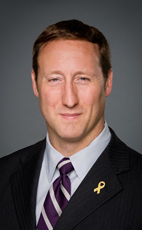Mr. Speaker, the provision of health care services for the mission in Afghanistan was not determined by a specific evaluation, but by on ongoing and continuous assessments to ensure that Canadian Forces members received appropriate health care services. The Canadian Forces deployed to Afghanistan quickly following the attacks of September 11, 2001, as part of a larger international effort. Since then, the Department of National Defence and the Canadian Forces have adapted in all areas related to deployed operations to meet the increased operational requirements associated with the mission in Afghanistan. As part of this ongoing reorientation and adjustment since the Canadian Forces first deployed to Afghanistan, health care programs and services available to all Canadian Forces members have evolved considerably based on ongoing assessments of evolving operational requirements.
The Canadian Forces monitored all aspects of health care for its personnel deployed to Afghanistan, those returning from deployments, and those remaining in Canada. As a result of this ongoing review and monitoring, processes and programs were adapted or developed to ensure the health care provided is appropriate and of a high quality.
With respect to improving treatment of combat casualties, Canada partnered with the U.S. Department of Defense joint theatre trauma system, which resulted in immediate improvement in the treatment of in-theatre casualties.
With respect to improving recording or tracking of individual medical information, the Canadian Forces health information system was deployed forward during the Afghan mission. It was successfully implemented and has become the standard of medical record keeping for all operations.
With respect to treatment of the complex physical injuries of those returning from Afghanistan, several physical rehabilitation initiatives were implemented to offer optimal care to injured personnel. The Canadian Forces notably made the following progress. It established the position of head of physical rehabilitation in 2008 to develop a multidisciplinary program of rehabilitation care to those with injuries. This led to the implementation of the Canadian Forces physical rehabilitation program in 2009 and the establishment of 20 physical rehabilitation positions in support of seven rehabilitation centres of expertise. It also acquired two virtual reality medical treatment systems, computer assisted rehabilitation environments, in partnership with civilian rehabilitation hospitals in Ottawa and Edmonton. These systems are used in the rehabilitation of Canadian Forces personnel with both physical and mental injuries.
With respect to mental health care, the Canadian Forces launched a number of initiatives to improve the immediate and long-term treatment needs for its personnel. The Canadian Forces notably made the following progress. It included deployed mental health teams in all Afghanistan rotations since 2003. In addition, five Operational Trauma and Stress Support Centres were established, focusing on the treatment of operational stress injuries. The mental health presence also increased at major bases and stations across Canada. It increased clinician training and mental health care education for military health care professionals undergoing training at the Canadian Forces Health Services Training Centre in Borden. It established in 2006 the third-location decompression program for Canadian Forces members returning to Canada after a lengthy deployment to ease the transition and ensure access to mental health professionals. It established the requirement that all Canadian Forces members returning from an international operation of 60 or more days undergo the enhanced post-deployment screening process as per the screening and reintegration policy of 2006 and based on a screening program that began in 2002. It established a series of joint network for operational stress injuries clinics across Canada in 2006 to provide a core set of specialized interdisciplinary mental health services for psychological trauma related to operational stress injuries. It established the cognitive behavioural therapy program in 2007 to provide treatment of a wide range of health and mental health problems. It instituted the mild traumatic brain injury clinical guidelines and surveillance in 2008 to improve treatment of concussions resulting from exposures to blasts. It developed the Road to Mental Readiness in 2009 to provide training to Canadian Forces personnel on mental health conditions, as well as traumatic and non-traumatic stress, with the objectives of decreasing stigma, overcoming barriers to mental health care, enhancing psychological resilience and providing tools to assist Canadian Forces members and families. It launched the ongoing operational stress incidence study in 2009 to provide information on the impact of deployment to Afghanistan on the mental health of Canadian Forces members, and it conducted the operational mental health survey in 2010 to identify symptoms of mental health problems in Canadian Forces members serving in Afghanistan and to determine the utilization of and perceived need for mental health services.
The Canadian Forces conducted an active recruitment campaign to address shortages in health services occupations, which coincided with the mission in Afghanistan. Since 2001, the number of health care professionals in the Canadian Forces has increased by over 360, representing an increase of over 15%.
The extent to which the number of medical staff and health care professionals has increased compared to the number of Canadian Forces personnel deployed is not available.

